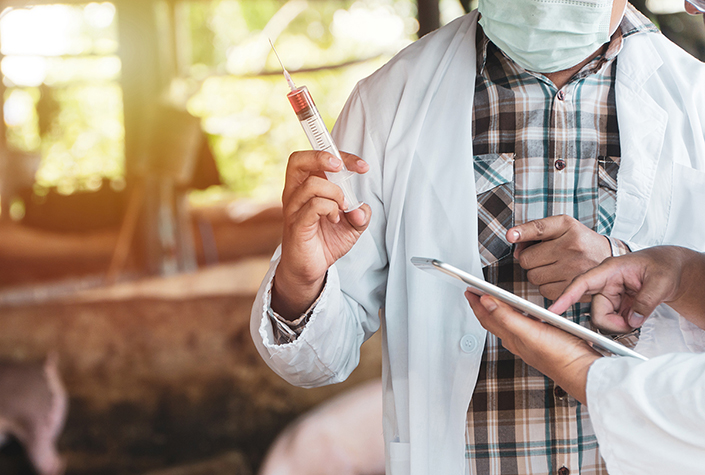Online system helps veterinarians track outbreaks and symptoms

With the touch of a smartphone button, veterinarians will be able to check online to determine if what they see in the field is unique to their area or part of a greater pattern, thanks to a new veterinary app and website created by a group of Texas A&M AgriLife faculty.
The Veterinary Syndromic Surveillance System (VSS) website and app are now live and will provide veterinarians a tool to access and input disease information to a central database, said Tom Hairgrove, Texas A&M AgriLife Extension Service cattle veterinary specialist in the Department of Animal Science.
Hairgrove is leading a three-year “Improving the Sustainability of Rural Veterinarians Through Mentoring, Targeted Education, Telemedicine and Monitoring of Disease Syndromes” project, funded by a U.S. Department of Agriculture National Institute of Food and Agriculture grant.
The VSS website and app meet one of the goals set out within that grant — to provide quality continuing education in production medicine and participation in real-time disease surveillance, thereby providing practitioners, students and veterinary technicians with an increased awareness of state and regional livestock disease issues.
Hairgrove said they have been working on the proof of concept for about six months. Only veterinarians can download the VSS app, which is found in the Apple Store and can also be downloaded to android phones. All the information goes back to a server that AgriLife Extension owns.
The new app is populated by veterinarians, along with the Veterinary Technology Program at Texas A&M University-Kingsville. Senior vet students are also using it to document records during their externships with private practitioners, Hairgrove said.
The difference between this version and previous ones is that the artificial intelligence will be able to pick up any flags on disease trends or syndromes that might go with a disease, Hairgrove said.
“Each day, there is a map with flags, and we can look at all the counties by zip code to see the disease syndromes in any area. They build upon one another,” he said. “The central database will be mined using artificial intelligence to sort through the information and provide feedback to practitioners.”
Also, the old app required an iPad. But the new app allows everything to be done on the smartphone, and most of the information can be added in just a few minutes.

